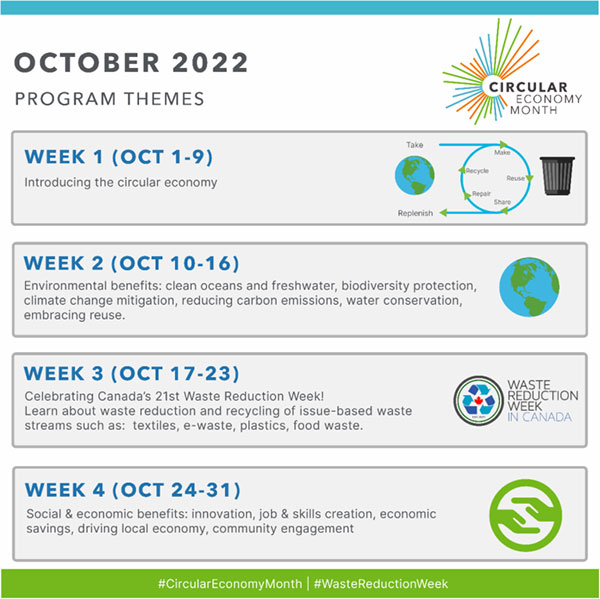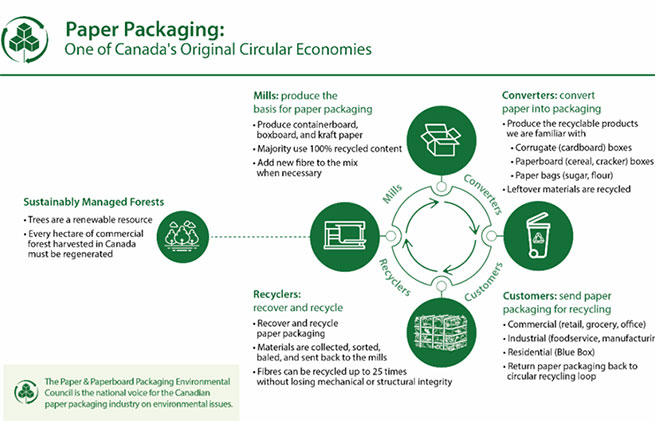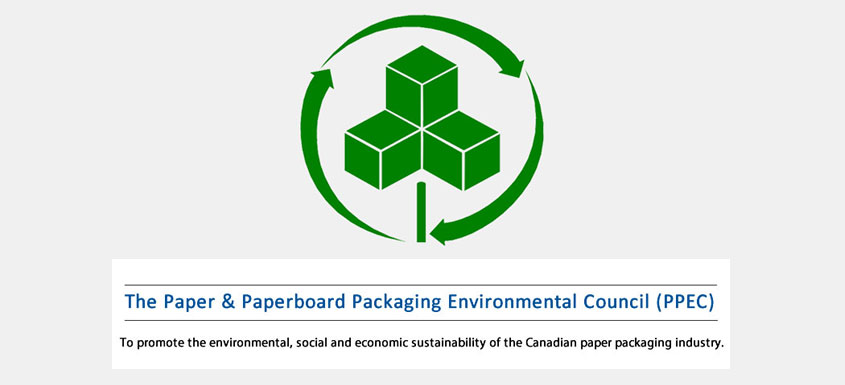Earlier this year, the Circular Innovation Council announced that October marks the inaugural Circular Economy Month.
As the Council continues to build on the success of their annual #WasteReductionWeek, they are now expanding the focus to circular economy for the entire month.
In their announcement, they shared “For 20 years Waste Reduction Week in Canada has focused on the concepts of waste reduction and recycling as a key component of our transition to a circular economy…Circular Innovation Council is extending Waste Reduction Week in Canada beyond the third week of October into Circular Economy Month to educate and excite Canadians about the opportunities and benefits of the circular economy.”
 Source: Circular Innovation Council
Source: Circular Innovation Council
As paper-based packaging is one of Canada’s first circular economies, PPEC is excited to support this campaign. We recognize that focusing on the circular economy is a continual, year-round activity, and there is no doubt that drawing additional attention to it and creating a larger discussion throughout October will be beneficial to raising awareness and enhancing education.
What is a circular economy, and why is it important?
The Ellen Macarthur Foundation states that “a circular economy is a systemic approach to economic development designed to benefit businesses, society, and the environment. In contrast to the ‘take-make-waste’ linear model, a circular economy is regenerative by design and aims to gradually decouple growth from the consumption of finite resources.”
And according to the report, “Turning Point – The Expert Panel on the Circular Economy in Canada” from the Council of Canadian Academies, “Only 6.1% of materials entering the Canadian economy come from recycled sources…For Canada to maintain its strong economy and global competitiveness, meet its commitments to reducing carbon emissions and maintaining biodiversity, and keep its people prosperous and healthy, it is critical that Canada’s economy to become more circular.”
We all have a role to play to play in developing and supporting the circular economy – from businesses actively working to reduce their climate footprint, to governments developing evidence-based policies, and to consumers understanding the environmental impacts of their purchases.
The Stanford Graduate School of Business agrees as their recent white paper, the Road Toward a Circular Value Chain, states, “…businesses alone cannot win this battle. A successful transition to a circular economy requires all stakeholders…to take action, so that we can leave future generations a better world to live in.”
Paper-Based Packaging: A Canadian Circular Economy Success Story
Our industry’s circular economy starts with PPEC members and the mills that produce the raw material, which is mostly made up of recycled content.
From there, converters turn it into recyclable paper-based packaging, which is used by businesses, government, institutions, and consumers. Once used, it is recycled, making its way back to the mill to be remade into new paper packaging products. And the process starts all over again.
Recycling is a critical component of the Canadian paper packaging industry’s circular economy. Recycled content keeps raw materials flowing longer, reducing the need to extract virgin materials. And the average recycled content for domestic shipments of the three major paper packaging grades – containerboard, boxboard, and kraft paper – is close to 82%, based on PPEC’s 2020 Recycled Content Survey.
And while research shows that paper can be recycled up to seven times, and corrugated box fibres up to ten times, a recent study from Graz University of Technology in Austria found that fibre-based packaging material can be recycled at least 25 times without losing mechanical or structural integrity. While this new research suggests that paper and board fibres are even more durable than previously thought, we know that we still have work to do to try to better understand how many times paper fibres can be recycled in Canadian recycling systems.
That circularity only comes with each player playing their part – from the businesses like PPEC members making it a priority to use recycled content in their operations, to consumers actively and responsibly recycling their paper-based packaging.

Using less and making less – just makes sense all around. Paper packaging is a circular economy that utilizes renewable resources that are regenerated, promotes the use of recycled content, and minimizes waste.
 Rachel Kagan
Rachel Kagan
Executive Director
The Paper & Paperboard Packaging Environmental Council (PPEC)
